Puerto Inca 157k,96m ***
For some reason I thought Peru was a relatively small place, about the size of, say, New Jersey. It’s probably some ethnocentrism combined with Mercator projection distortions. NJ is 8,700 sq miles. Peru is 1.28 million sq miles – you could fit almost 50 New Jerseys in here. A lot of riding! Back to the story.
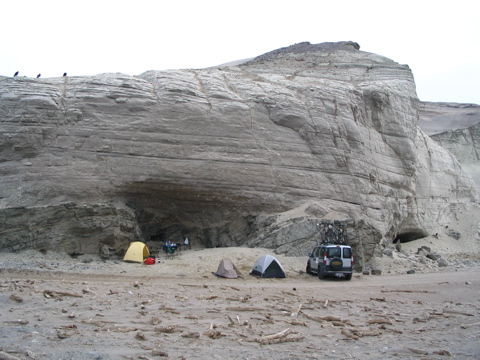

We awoke this morning at our beach cliff campsite a few kilometers south of Ocana. Vultures were perched on the cliff above and circling overhead. A cow skeleton lay on the beach a few meters away. With the cemetery a couple hundred meters away, and the stony beach covered with wilty driftwood it was a languid, macabre atmosphere. Eduardo slept in.
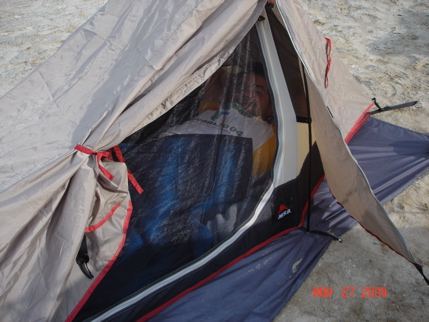
A few people passed by in the night, three on bikes and a couple walking. You could see their tracks in the sand over ours. One guy awoke on the beach at the same time we did, and walked past us toward Ocana. We gave him some bananas for the walk.
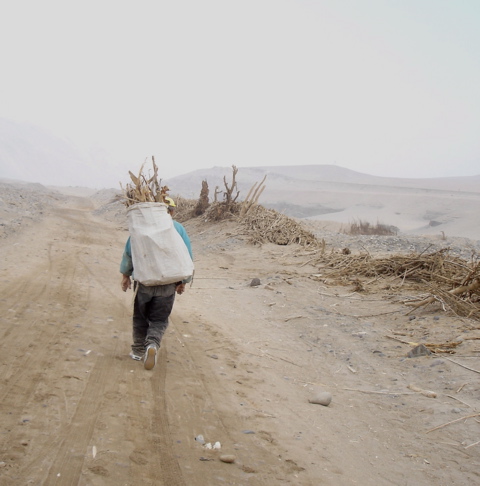
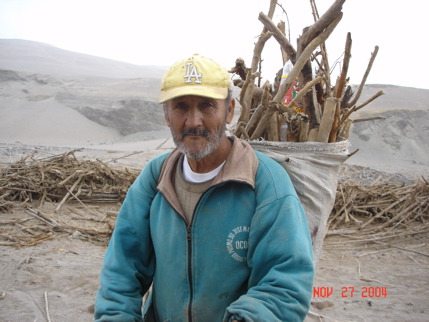
There really was never meant to be a road along this stretch of the Pacific Coast in South America. Steve and I went back to my finishing point yesterday (just past the tunnel about 12k north of Ocana), mounted up and rode along the massive cliffs and sand dunes.
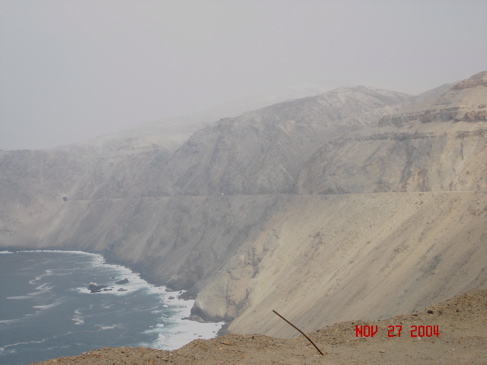
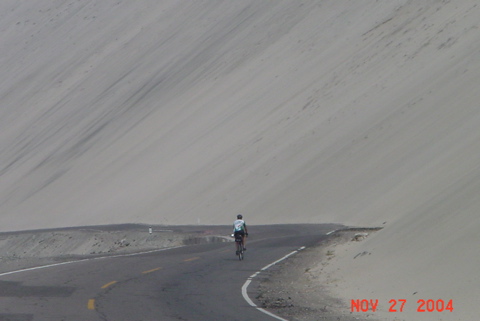
The Pan American Highway here is regularly blocked by rockslides. There is no life on the land, but the ocean alongside teems with seabirds and whatever lives in the water. In the midst of this desolation, Eduardo stopped to carve RASAM 2004 into some sand by the side of the road and Steve contemplated everything while we took an unsupported break (what happened to Eduardo?).
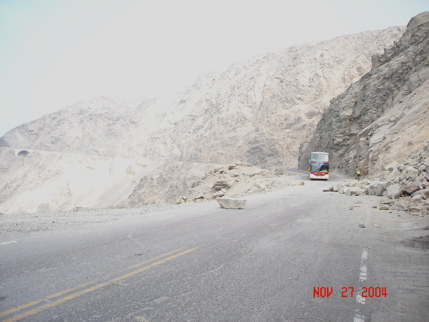
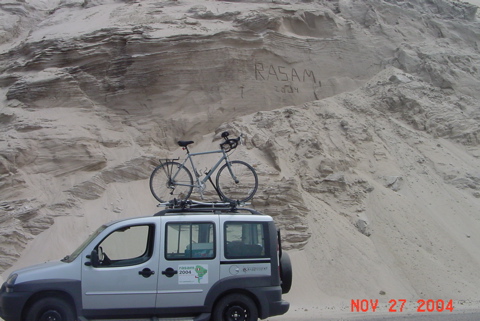
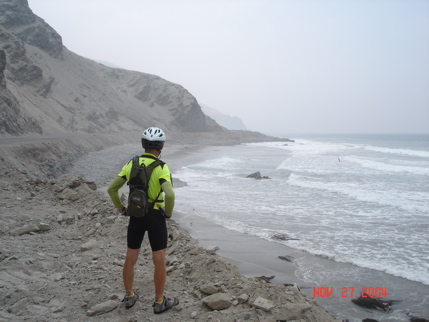
Steve was not feeling real well today. Toward the end of the day I rode on ahead and then into the small, dusty, dirty fishing village of Chala.
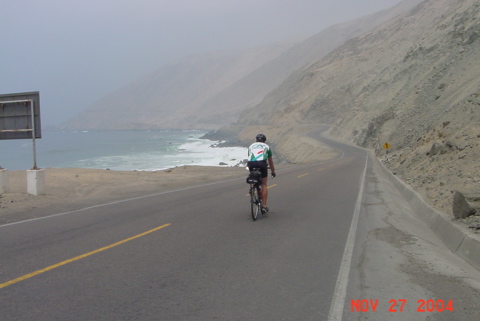
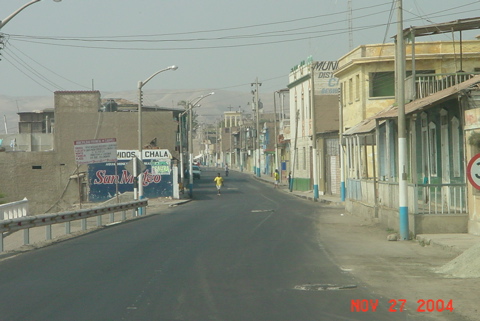
There is nothing to recommend the town itself, but just north of it was our terminus of the day, the ancient Inca fishing village of Puerto Inca. Heading north out of Chala there is a moderate climb. Eduardo and Steve caught up to me near the top, then waited for me a few more kilometers down the road at the turn off to the resort.
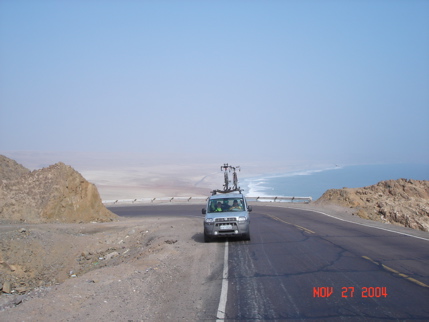
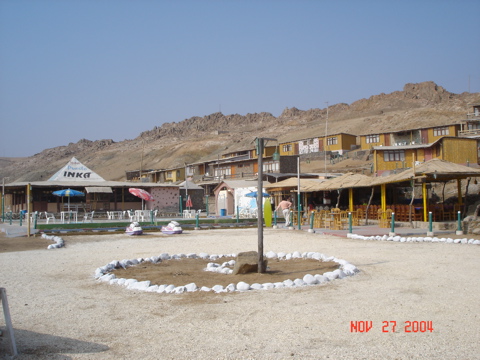
The Puerto Inka resort itself consists of some more solidly constructed buildings with a couple of rooms in each, an outdoor restaurant, a pool, a nice beach and a camping area. It is the only decent hotel, I think, for 100 miles in any direction. Behind it is the archaeological remains of the Inca fishing village of Qhapac Nan.
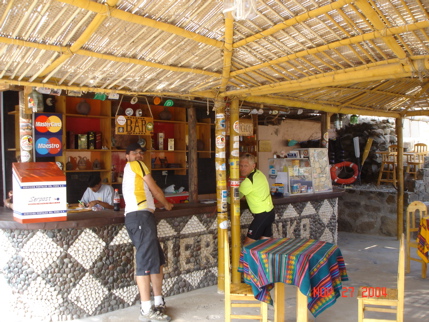
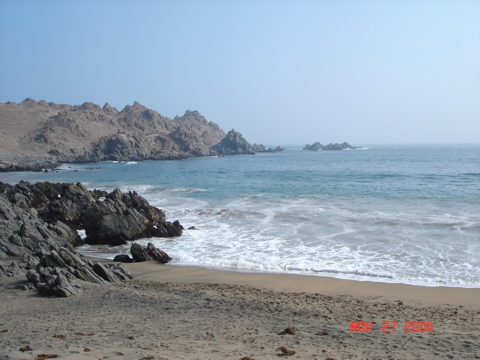
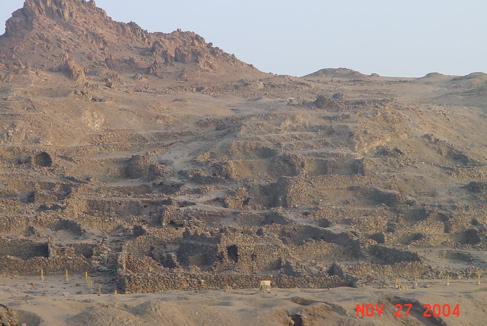
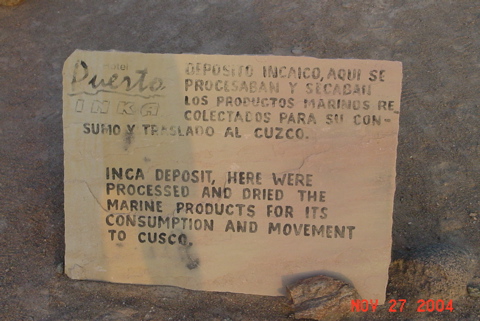
These pictures do not do the Inca site justice. The homes, work buildings, temples and llama pens here are all made of stone. Though their wood and leaf roofs have disappeared over the years, you can clearly see their community and where they caught and dried seafood for transportation to the Inca capital at Cuzco in the mountains over 200km away. The Incas built a special road for the purpose. I close with the view from my room, and then some comments about Peru.
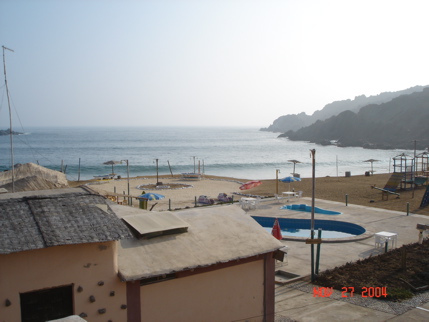
NOTES ON PERU: Steve and I are covering much more ground along the coast in Chile and Peru than we were in the mountains. Though there are a number of large (3,000-4,000 ft) and small (500 – 1,5,00) climbs each day, there also seems to be good stretches of flat in between where we make the time up. Peru seems to be a more interesting place to ride than the other countries I’ve been ih. Some observations:
– Peruvians seem invariably friendly. From the police to the poor people carrying wood they wave, whistle, and smile. Steve and I say “Hola” or “Buenos Dias” to many people during the day. Here they respond “Hola Amigo”.
– The riding days are more varied – both in the inhabited and uninhabited areas. When you round a corner or crest a mountain, you never know what to expect. Large canyons, lush valleys, sand dune desert and rocky Cliffside riding are occasionally punctuated with isolated homes of rock or woven palm leaves, small villages and occasionally cities like Tachna, Ilo and Arequipa.
– There is a lot of obvious poverty here. We pass dozens of those poor people scavenging for wood, cleaning their clothes in the creeks by the side of the road and whole villages made of nothing but wood sticks and woven palm leaf walls and ceilings.
– Peruvian people keep track of things. The bathroom picture below from Hotel Puerto Inka shows green labels on everything. Every business here is into receipts. Hand written, calculator added. We get stacks of them when we check out of the hotels. It takes a half hour to check out.
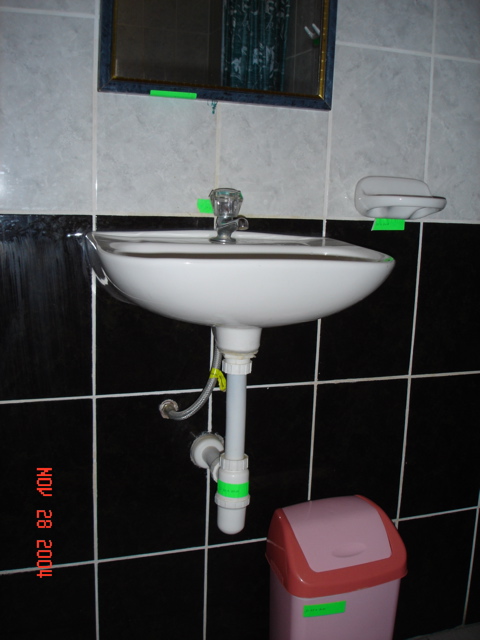
– There seems to be a richer history and culture here than in Argentian, Chile, Paraguay and Brazil. Pre-Inca cultures like the Wari left towns, textiles and artifacts. The Inca capital itself, Cuszo is said to be the archaeological center of the Americas. And when the Europeans came as they did everywhere in South America, the colonial culture developed.
That’s it for now…

 November 26, 2004
November 26, 2004 